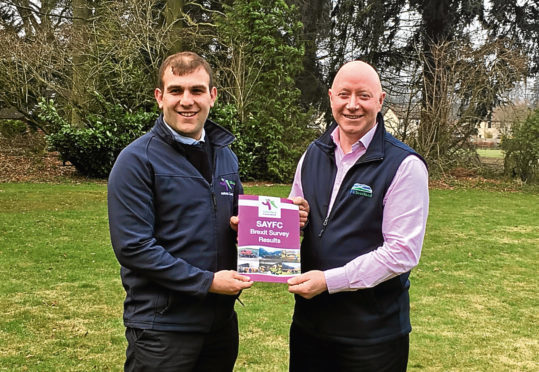More than two-thirds of Scottish young farmers voted remain in the Brexit referendum.
A report published by the Scottish Association of Young Farmers’ Clubs (SAYFC) reveals 69% voted remain, 26% voted leave and 5% did not vote at all.
The report is based on a survey of SAYFC members asking for their views on Brexit. It sets out the association’s five key asks during Brexit negotiations.
These include access to markets, with emphasis on the lamb meat marketing, and availability of finance to encourage innovation and growth.
The third ask from the association is access to land, including looking at new fiscal measures that may encourage outgoing farmers to let land to new entrants.
SAYFC also calls for the creation of farm business support measures to help new businesses in a volatile marketplace, and lastly it calls for a thriving industry “so we can continue to feed the country and manage the land and environment for our next generation”.
According to the survey, 34% of young farmers believe availability of markets is the most important factor affecting their careers in the next five years, followed by access to land, and availability of working capital and long-term finance.
The survey also found that 44% of young people thought Brexit offered an opportunity for positive change in the farming sector, while 57% believe the best method of supporting new businesses is to establish incentives for established farmers to allow young farmers to come into the business, share farm or rent land from them.
More than half of those surveyed – 55% – said they believed Brexit was negatively affecting their local community, and 39% of those involved in running an agricultural business said they were not confident to invest in the business at present.
When asked if farming should be subsidised in the future, 67% said yes but the way in which financial support is distributed must change.
Just over a fifth – 22% – said subsidies should continue as they are at present, 9% called for their removal and 3% said they should continue for a limited time before being abolished.
Newly appointed SAYFC agri and rural affairs committee chairman Iain Wilson said: “We felt it was essential that we had the thoughts and views of our members to allow our new agri affairs committee to push forward in this decisive 12-month period for the farming future of all our members.
“We all as young farmers want the same thing – a vibrant and thriving industry to work in. It is essential now that policy makers listen to industry stakeholders and use this opportunity to drive this industry forward.”
Outgoing chairman Duncan Morrison said the report would inform policy makers of the needs of young farmers.
He said: “The next 12 months will be crucial as we get closer to leaving the EU for good. There is so much still to be decided and it is vitally important that concerns of young farmers raised in this report are remedied.”










